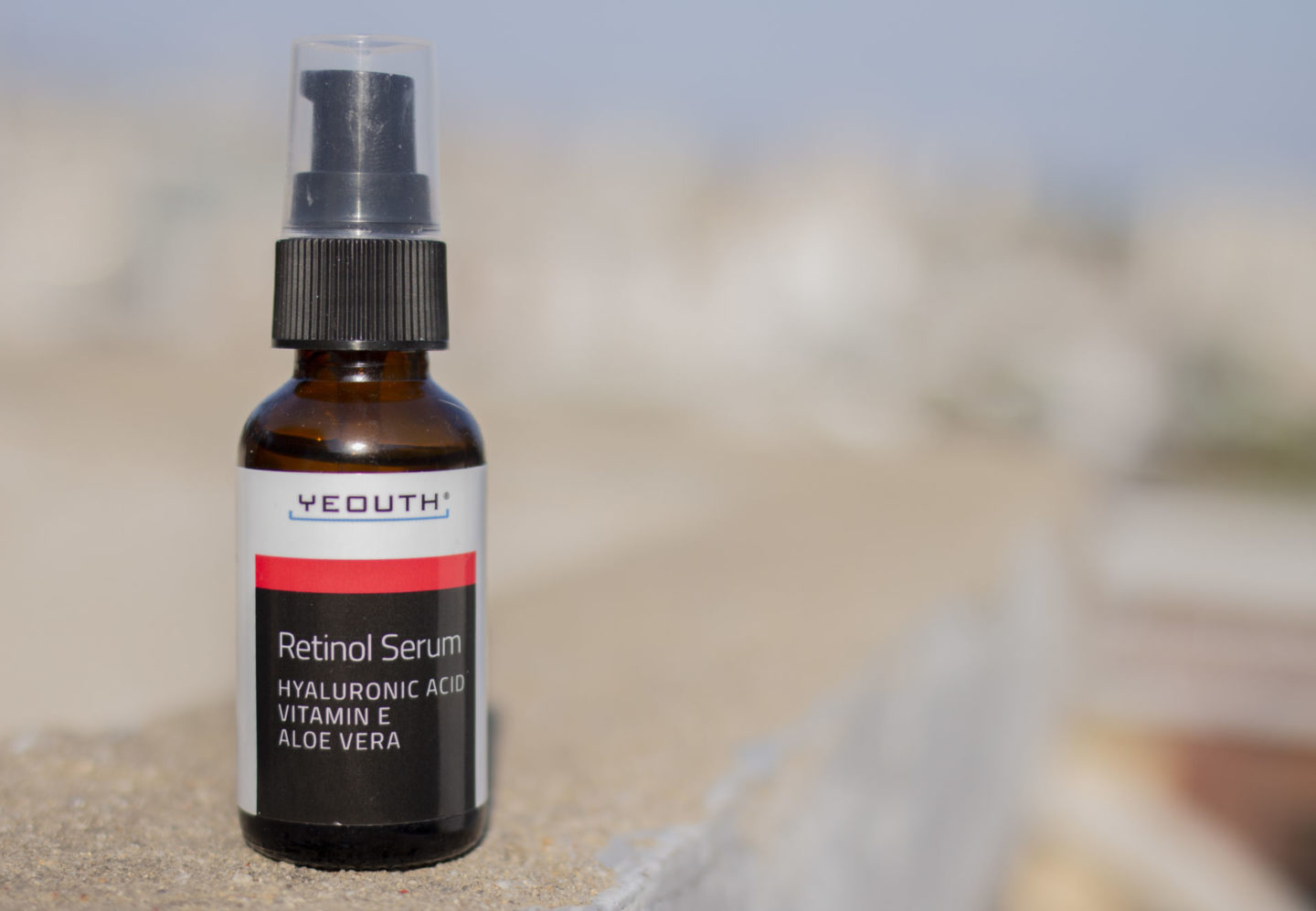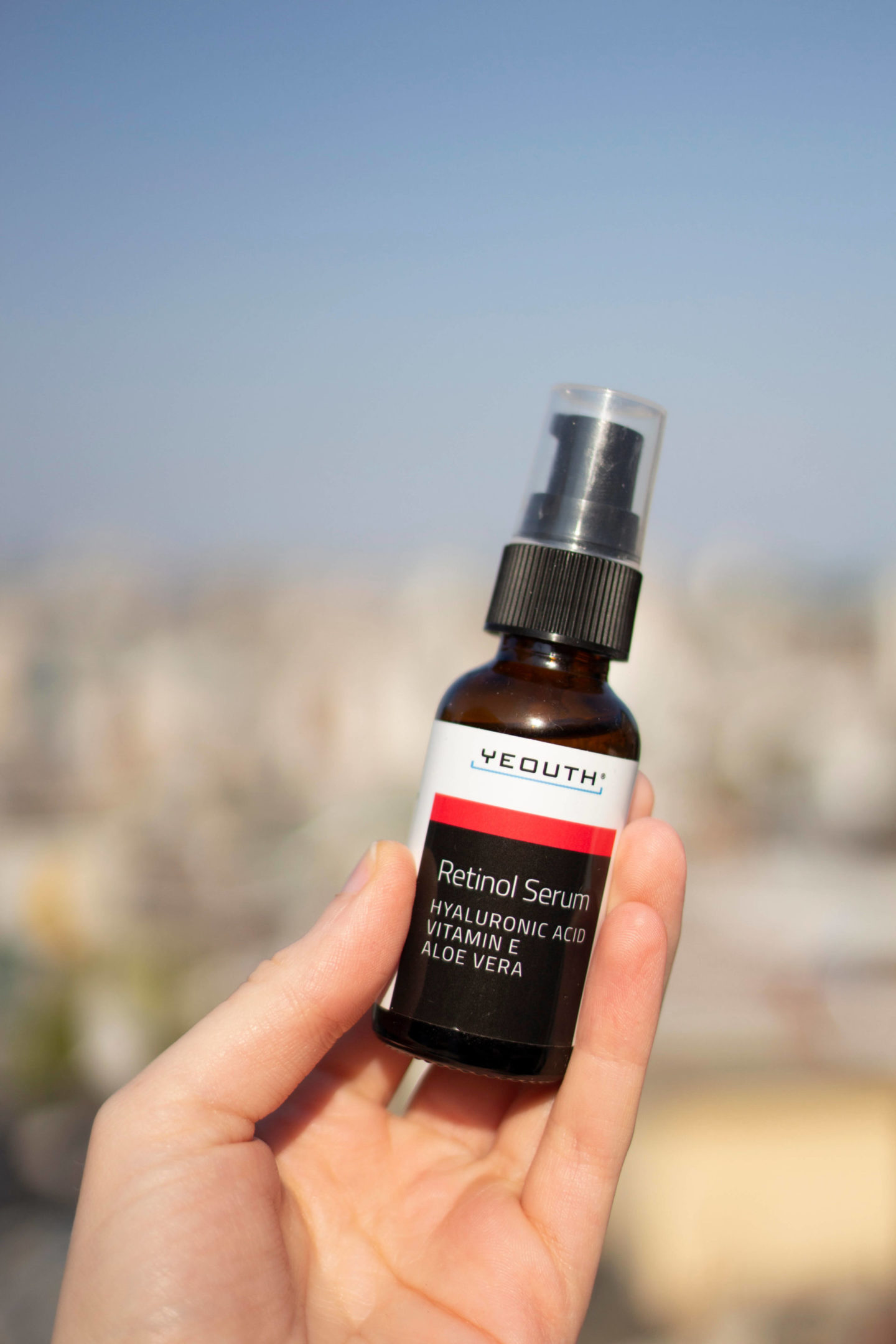

This post contains gifted items. You can read more about gifted items and why I feature them here.

I’ve heard about the power of retinol, the non-prescription version of retinoids, a powerful vitamin A derivative used to help prevent the signs of ageing; but I’ve been super hesitant to add it to my skincare routine. Honestly, I was scared to incorporate it because there is a whole host of information online about conflicting ingredients, as well as the the side effects. And, as someone who has incredibly sensitive skin that is prone to eczema flare ups, anything that advertises dryness is not something I readily add to my skincare shelf. Yet here we are, adding retinol to my skincare routine.
Yes, I’m still a little scared.
Benefits of Adding Retinol to a Skincare Routine:
First let’s look at the reasons why I was even considering adding retinol to my skincare routine. It’s well documented that Retinoids (and therefore Retinol) are effective at what they do. The prescription strength creams help with acne as well as ageing concerns (those pesky fine lines and wrinkles), and the lower over-the-counter concentrations are still doing the work. Benefits of using retinoids or retinol are things like increasing the appearance of skin firmness as the acid helps to stimulate collagen and elastin production as well as the rate of cell turnover. It is said to help improve the appearance of uneven skin tone, targeting things like pigmentation and texture and at prescription level retinoids help with acne.
What is Retinol (Retinoids):
Retinoids are acids derived from Vitamin A, and contain different concentrations of the active ingredient retinoic acid depending on their form. There are several forms of retinoids you can get both over-the-counter (OTC) and via prescription, as well as different methods of application. OTC forms are usually in serums and creams, and the process of forming the active ingredient alters the speed and the potency. Prescription retinoids are faster acting and more potent than anything you can get over-the-counter.
How Retinol works:
Retinol and retinoids work in the same way. The retinoic acid diffuses through the cell membrane and binds to receptors in the cell’s nucleus to act like a gene, promoting cell growth and blocking the production of an enzyme called collagenase that breaks down the collagen we produce. Increased cell turnover helps with breakouts, and protecting our collagen reserves is essential for keeping skin elastic, so fewer wrinkles.
It’s a myth that retinol thins the skin, but it does increase photosensitivity due to the new skin cells being easy to burn. So it’s essential to use a broad spectrum sun cream to protect the work that the retinol is doing.
However, using any kind of retinoids or retinol, even the really really weak ones, comes with potential side effects. Irritation, dryness, redness, peeling are common for first time retinol users, and for those on stronger, prescription retinoids (like accutane) can experience a whole host of others. It is important to introduce retinol and retinoids into a routine gradually to help the skin build tolerance to retinoic acid.
It is also important to remember that prescription retinoids and OTC retinols have different time spans for seeing results. For prescription creams, you can see results pretty quickly, within a matter of weeks depending on the strength. For OTC retinols it can take 6 months to see similar results from continued use.

How I added retinol:
I chose a retinol serum that had soothing and hydrating ingredients to help combat any potential irritation my sensitive skin my have to the retinoic acid. Yeouth‘s Retinol Serum contains hyaluronic acid (hydration) Vitamin E (antioxidant, moisturising and wound healing), as well as Aloe Vera (soothing, anti-inflammatory), so I felt that it was a good fit for my skin to try.
Application with Retinol is important so as not to overwhelm your skin. I’m only using a pea sized amount, and I waited a few days after the first application to assess whether or not my skin was going to react. Thankfully it didn’t, so currently I am using the serum with a two day gap in between, and only at night.
The way I apply this Yeouth Retinol Serum is by applying it after my toner as the third step of my routine. To help reduce the risk of irritation when I first started using this serum, I applied it when my face was completely dry and toner fully absorbed. As the skin is a lot more absorbent when it’s damp, it means the retinol can ‘penetrate deeper’ which can cause irritation, and I’m all about avoiding irritation. Once I’m sure that my skin isn’t showing any signs it doesn’t like the retinol serum, I’ll start being less precious about my skin being absolutely 100% dry.
To help keep my skin moisturised and protected, I’ll then use a thicker serum (the missha Time Revolution Artemisia Ampoule and celimax Noni Energy Ampoule are my current go-to’s) as well as some rosehip oil. Then I’ll finish my routine with a moisturiser or sleeping pack depending on how my skin feels.
The serum itself is very easy to apply. It spreads easily and absorbs well into the skin, though it does have a fragrance. I really like that the dispensing method is through a pump action, as it reduces the risk of contaminating the serum with bacteria whilst still allowing for easy access to the product. The rest of the packaging is more functional than pretty or aesthetic, but the bottle keeps the serum safe and that’s the most important thing.

Results:
I’m not expecting to see results this soon, but I’m hoping that using this serum will help with areas of texture that I have, as well as preventing the dreading fine lines from taking hold. So far I’ve not seen a huge change in my skin (as expected), but I haven’t noticed any increased sensitivity in my skin, or redness, dryness or irritation.
Personally, I feel like I do see improvements, but that could be from a couple of reasons this early on: being more religious with my reapplication of sun cream, using more moisture in my daily skin care routine, or making sure that I’m cleansing my face at the end of each day using an oil cleanser, rather than just adding retinol to my skincare routine.
Have you tried retinol products before? How did you add them to your routine, and are there any that you really recommend? I’m interested to try!







Leave a Comment